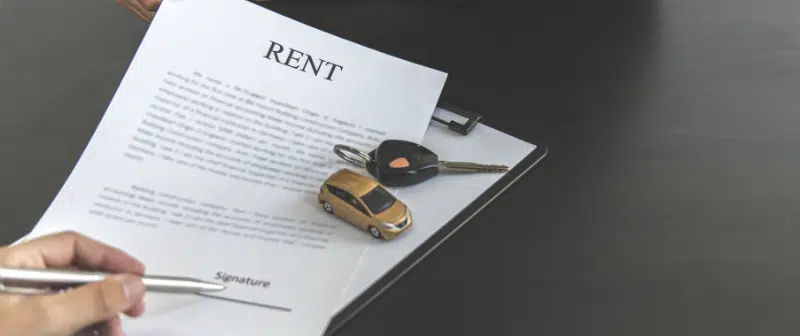
VPI Cars is Metro Manila Philippines’ highest-rated full service car rental platform. We offer short, long term rentals, chauffeured, corporate leasing, and many more!

Renting a car can be one of the easiest ways to travel comfortably, whether you’re heading to a business meeting, going on vacation, or just need a ride for the weekend. But before you drive off, there’s one thing you need to understand: the car rental agreement.
For first-time renters, the agreement might seem like a bunch of paperwork—but it’s actually one of the most important parts of your rental. It tells you everything you need to know about your responsibilities, what’s allowed, and what happens if something goes wrong.
As one of our car rental tips, we’ll explain the important sections typically included in a car rental agreement, so you know what to look for and feel confident every time you rent a car.
A car rental agreement is a legal contract between you (the renter) and the car rental company. It outlines the terms and conditions of the rental, including how long you’ll use the vehicle, how much you’ll pay, and what rules you agree to follow while the car is in your possession.
You don’t need to be a lawyer to understand it—but you do need to know what it covers. Understanding the key points of the agreement can save you from confusion, unexpected charges, or even disputes later on.
Some people skip the fine print and just sign. But the rental agreement protects both you and the rental company, so it’s always a good idea to review it.
Here’s why:
Knowing these things ahead of time can help you avoid extra charges and misunderstandings.
Let’s break down the main parts of a standard car rental agreement that you’ll likely see when renting from most companies, including VPI Cars.
This section includes your name, contact details, license number, and the names of any additional drivers. It confirms who is legally responsible for the vehicle during the rental period.
Why it matters: Only listed drivers are allowed to drive the car. If someone else drives and an accident happens, insurance may not cover it.
This part lists the make, model, license plate, and condition of the vehicle at the time of rental. Some agreements may also note fuel level, mileage, and any visible damage.
Tip: Always double-check this info and take your own photos before leaving the lot. If anything’s missing or incorrect, let the rental company know.
This section outlines the exact dates and times when the rental starts and ends.
Why it matters: Returning the car late—even by an hour—may lead to extra charges. If you need to extend your rental, always contact the company ahead of time.
This part shows how much you’ll pay per day (or per hour), any driver fees, and the total estimated cost. It may also include late return fees, deposit requirements, and cancellation terms.
Look for:
Tip: Ask about any hidden fees. At VPI Cars, we’re transparent with our car rental rates, so there are no surprises.
Most car rental agreements follow a “full tank in, full tank out” rule. That means the car will be given to you with a full tank, and you’re expected to return it the same way.
Why it matters: If you return the car with less fuel, you may be charged a refueling fee that’s higher than local gas prices.
Some rentals come with unlimited mileage, while others have a daily limit.
At VPI Cars: We typically offer unlimited mileage for local travel, but always confirm the policy, especially for long-distance or out-of-town use.
Why it matters: Exceeding a mileage limit can lead to per-kilometer charges.
This is one of the most important sections. It explains what type of insurance is included, what it covers (e.g., third-party liability, vehicle damage), and what your financial responsibility is in case of an accident.
Things to look for:
Tip: If the included insurance is basic, ask if you can upgrade for more coverage and peace of mind.
This section outlines where and how the car can be used. For example, some agreements don’t allow off-road driving or leaving the country without permission.
At VPI Cars: You’re allowed to travel outside of Metro Manila, but we appreciate it if you let us know in advance.
Why it matters: Violating usage rules could void your insurance coverage.
What happens if you get into an accident? If something happens to the car, the agreement will explain what steps to take and what you may need to pay for.
Usually includes:
Tip: Don’t wait to report an issue. Contact the rental company immediately if there’s an accident, no matter how minor.
You’re expected to return the vehicle in the same condition it was given to you—clean, undamaged, and on time.
Some policies may include:
Tip: Take photos during drop-off, just like you did during pick-up.
Even if everything looks good, don’t be afraid to ask questions. A good rental company will be happy to answer them.
Here are a few examples:
At VPI Cars, we make car rentals easy and clear. We explain all terms before you sign, answer your questions honestly, and make sure you know what to expect every step of the way. No hidden fees. No confusing contracts. Just reliable service and well-maintained vehicles for every type of traveler.
Why customers trust VPI Cars:
If you want a car rental experience that’s simple, honest, and stress-free—VPI Cars is your best choice.
➡️ Visit vpicars.com today to view available vehicles and book your rental. We’ll make sure you understand everything clearly before you drive away.
VPI Cars Manila (formerly CF Car Rental Manila), one of Metro Manila’s highest rated car rental services provider. Happily serving since 2014!

VPI Cars is Metro Manila Philippines’ highest-rated full service car rental platform. We offer short, long term rentals, chauffeured, corporate leasing, and many more!